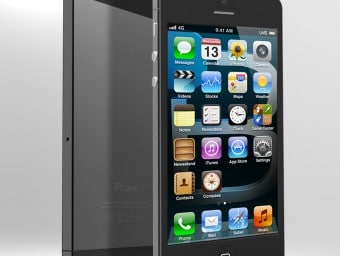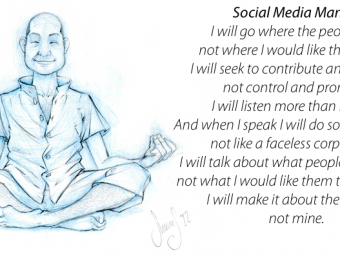The Superbowl’s biggest winners were also its biggest losers
The winner of the populist vote in this year’s Super Bowl ad war is the Betty White Snickers commercial. According to the 2010 USA T...
11 Feb 2010 3734 ViewsWhy drive-to-web works
The winner of the populist vote in this year’s Super Bowl ad war is the Betty White Snickers commercial. According to the 2010 USA Today Ad Meter, the commercial received an 8.68/10 score. It was also the most talked about commercial the day after the Super Bowl.
Do you think all that buzz was about fluffy nougat enveloped in gooey caramel and rich milk chocolate? No. Do you suppose they vote based on how many candy bars the spot would sell or how much brand equity it generated? Not likely. The buzz was about Betty and Abe. The votes were positive reinforcement delivered to the powers that be for not boring the pants off us with some P&G-inspired cliché.
If you want to see the spot that will mostly likely generate the biggest business benefit, you’ll have to go all the way to the bottom of the Ad Meter ranking. There you will find the somewhat disjointed “Wear the Pants” spot from Dockers. Out of the 63 commercials ranked, it placed number 59 and was one of the least talked about.
But if you compare website traffic from the Super Bowl ads you see another story: Dockers received an amazing 5010% increase in site traffic compared to Snickers.com, which received almost no noticeable boost in site traffic. I’m sure the words “free pants people” uttered during a recession didn’t hurt Docker’s traffic.
With 106.5 million people watching, the Superbowl has become the de facto launch pad for major campaigns in the US. Advertisers spend millions on commercial production and website design to dress-up their brands for the event. And with CBS charging $3.01 million per 30 second spot, it’s smart to get the most for your money. Which I feel is where most Superbowl advertisers this year fumbled.
Out of the 60+ commercials that aired during the Super Bowl, most companies squander the chance to drive more eyes to their brand online. That would have provided the opportunity for advertisers to build relations with viewers during the off-season and perhaps convert them to brand fans by the time Superbowl XLV rolls around.
And just to be clear, a URL super at the end of a spot is not drive-to-web (at least not in my book). A drive-to-web spot does just that: It provides a compelling reason to go to the website — like free pants. Of course the key to getting business out of any of this is having something of value online that will engage visitors in a relevant manner and encourage repeat visits. That in itself can be a lot more difficult than entertaining a football fan for 30 seconds.
But forget drive-to-web, you would think most of the spots aired last Sunday were produced in the 1980’s. Hardly any even bothered to featured a URL. Or if they did, it was so small that it begged to be overlooked. Watch the Volkswagen and Honda Crosstour spots and you’ll see what I mean. The URL is there, but it’s tiny. It took me a couple of viewings to even notice it.
Comparing Ad Meter’s two highest rated commercials, Snickers and Doritos, to the far less popular HomeAway.com and Dockers spots, there is a profound difference in post-game site traffic. According to Alexa rankings of daily page views site traffic for Snickers and Doritos remained flat leading up to the game and received little additional traffic during and after the game.
Compare that with the skyrocketing site traffic of Homeaway.com and Dockers. That’s because despite their low appeal, the two spots managed to entice viewers online.
According to a July 2009 report by ICOM, the effectiveness of broadcast TV at driving consumers to the web is 17.8%. During the Super Bowl, that translated to a potential 19 million people looking at an advertiser’s website from just one ad. By using an obvious drive-to-web message, companies could have continued the fun online and built even more brand equity, loyalty and engagement in ways that TV simply can’t. For the most part, that opportunity was lost.
Doritos didn’t even encourage people to see all the Crashthesuperbowl.com spots, which featured more fan created content on their site.
VW had a small link to their Punch Dub url that is hidden under their big VW logo.
Where was Dr. Pepper’s drive to record your own version of Dr. Love to join the never ending song? They paid for the KISS song, and that’s not cheap.
Sure, men marching across a field in their jockey shorts lacks the entertainment value of seeing Betty White tackled face down in the mud. But Snickers missed a chance to send people to their site to see the other Aretha Franklin/Liza Minelli spot and perhaps provide some value to candy-lovers that would keep them buzzing and returning to the site during the off-season.
Today brands are spending millions to create original content for both TV and the web, often times under the same campaign theme. But in many cases, viewers would never know it. In today’s economy every dollar counts more than ever. That’s why I believe most, if not all, spots should incorporate some form of drive-to-web messaging coupled with a web concept that makes it worth the trip. And that required planning web activities in from the start both strategically and creatively.
Brand managers need to break down silos between traditional medias, new media and PR to get all of their promotional efforts working in unison and delivering more return from their marketing spend. Spots that do that will get my vote at next year’s Superbowl (unless the Patriots make it, then I’ll be too wrapped up in the game to care about the spots).
Like this post? You'll find more marketing insights in my new book: International Brand Strategy: A guide to achieving global brand growth, now available from booksellers globally. Order your copy here.
Speaker, consultant & founder of Duffy Agency, the flipped digital agency that provides accelerated growth to aspiring international brands.





